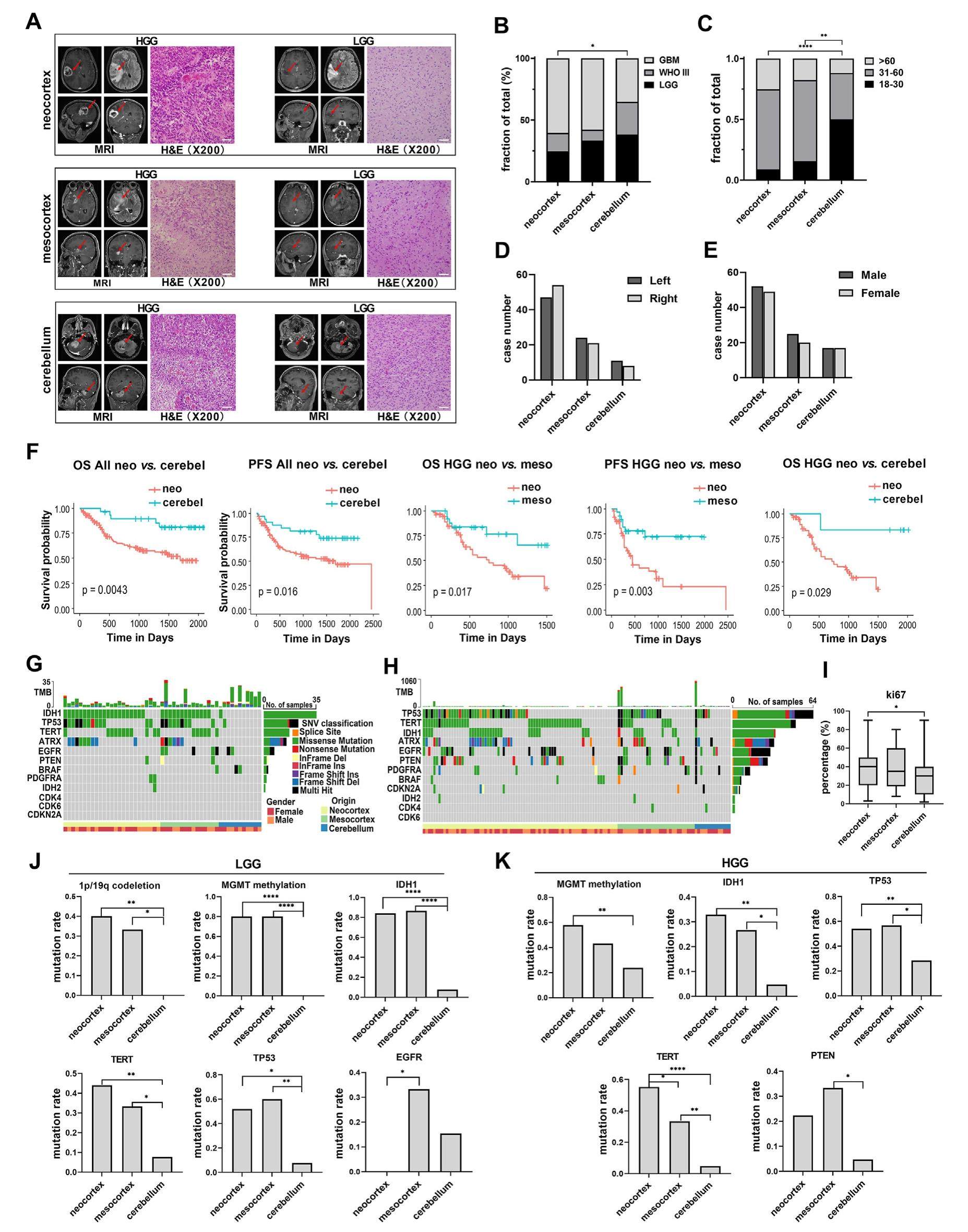
Distinct clinical profiles and mutation landscapes of gliomas originating from the neocortex, mesocortex, and cerebellum


Gliomas originating from anatomically and developmentally distinct brain regions have different clinical outcomes. However, the molecular landscape underlying this difference remains largely unknown. We analyzed key molecular mutations via sequencing and correlated them with clinical characteristics in 180 adult patients with gliomas originating from the neocortex, mesocortex, and cerebellum. Cases of cerebellar origin had significantly longer survival than those of supratentorial origin, consistent with higher rates of mutation in key genes associated with supratentorial gliomas. In high-grade gliomas (HGGs), shorter survival was found in cases of neocortex origin compared to those of mesocortex or cerebellum origin, consistent with a higher rate of mutation in the hTERT promotor. In lowgrade gliomas (LGGs), cases of supratentorial origin also exhibited higher mutation rates in specific genes. Different driver genes that potentially underlie the progression from LGG to HGG were identified for glioma per origin. In summary, our data shed light on the molecular mechanisms for the different clinical characteristics of gliomas of different origins. These findings highlight the heterogeneity of the molecular landscape of gliomas originating from different brain regions and can provide a critical foundation for targeted therapy against gliomas.
